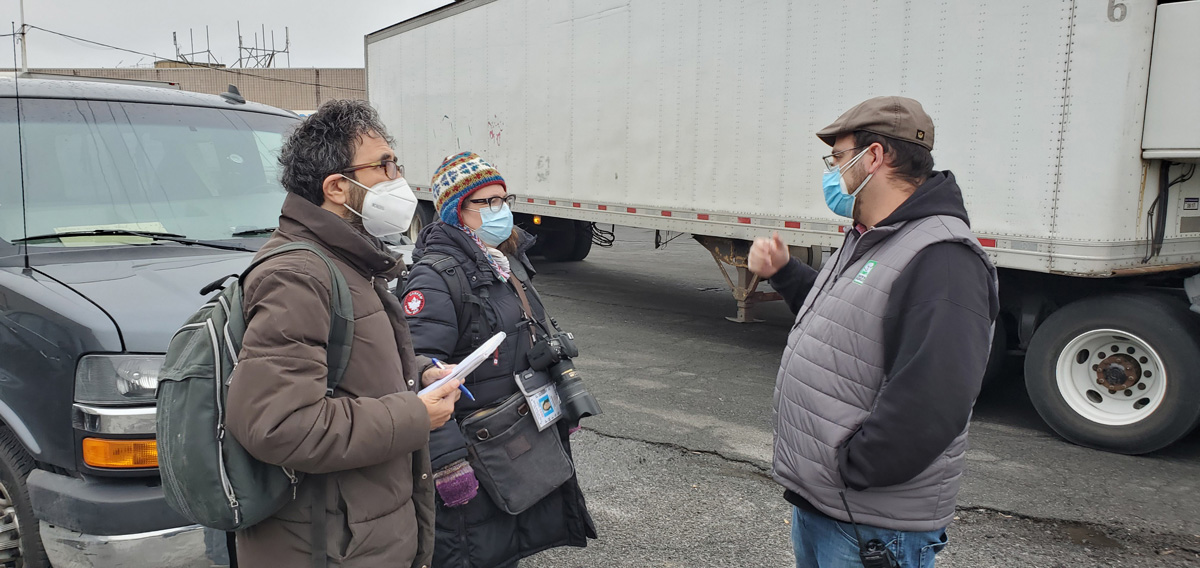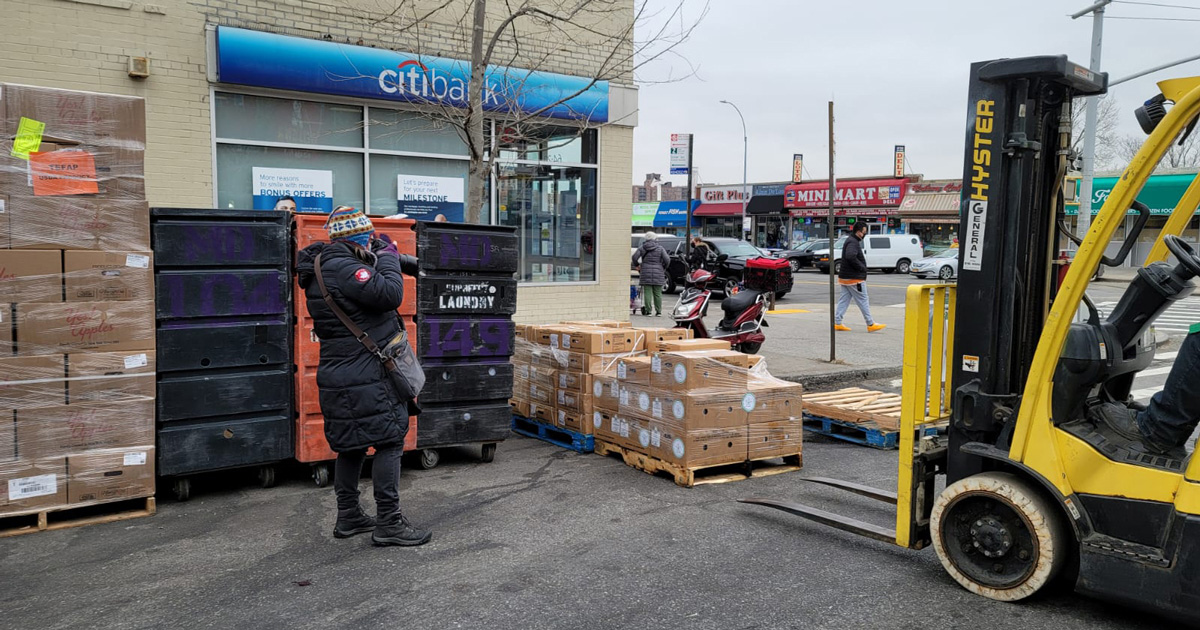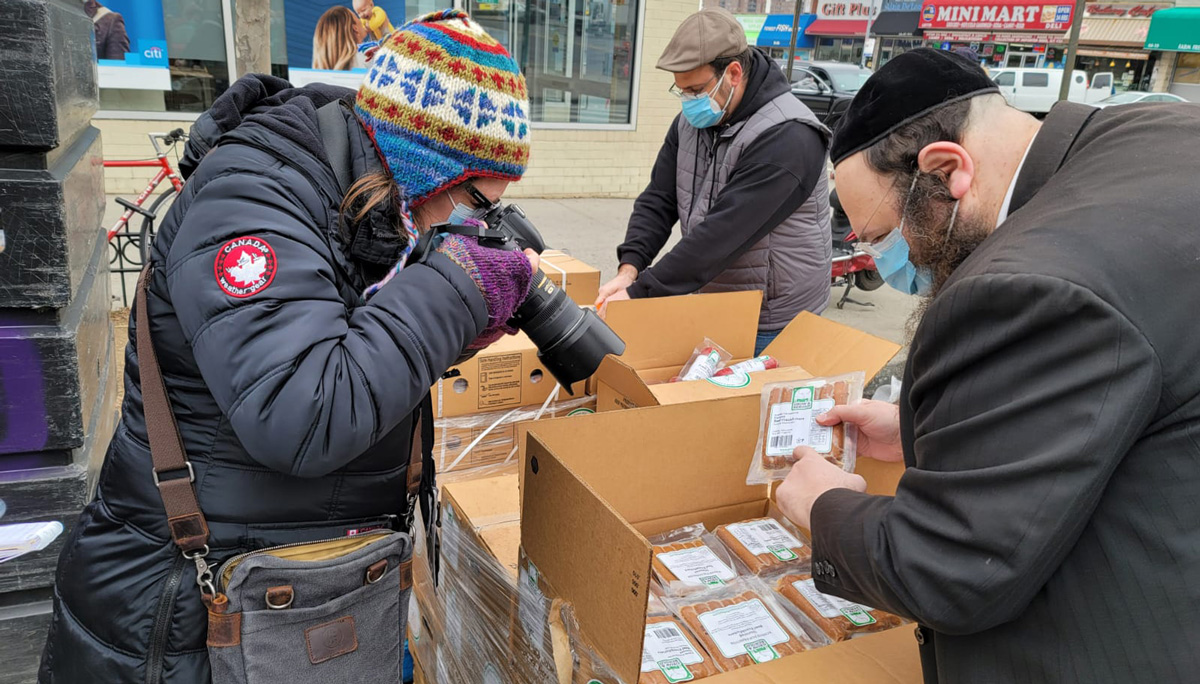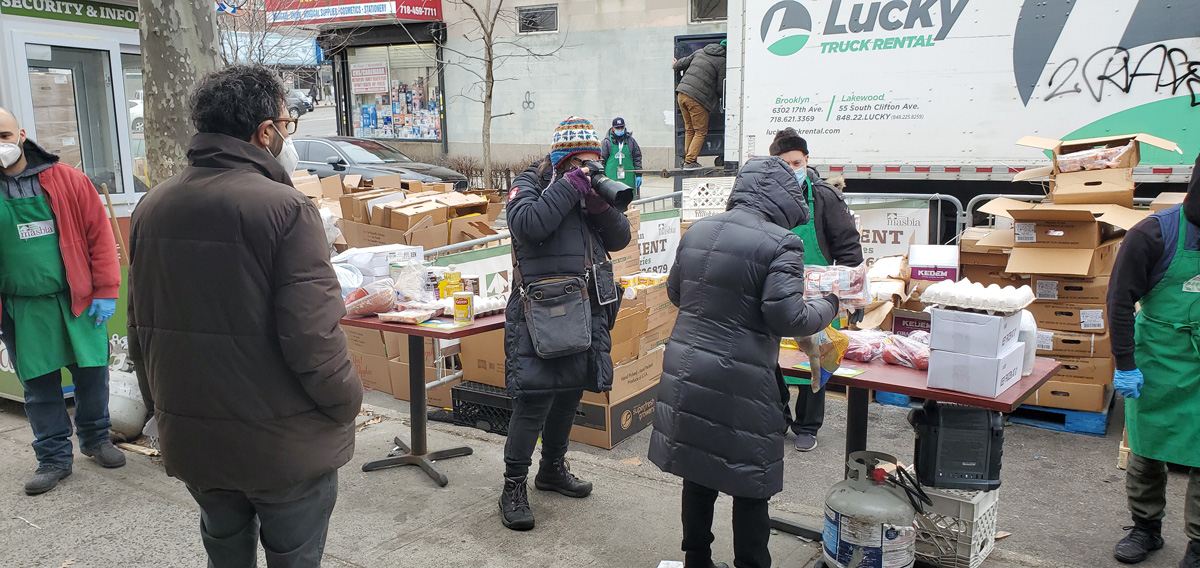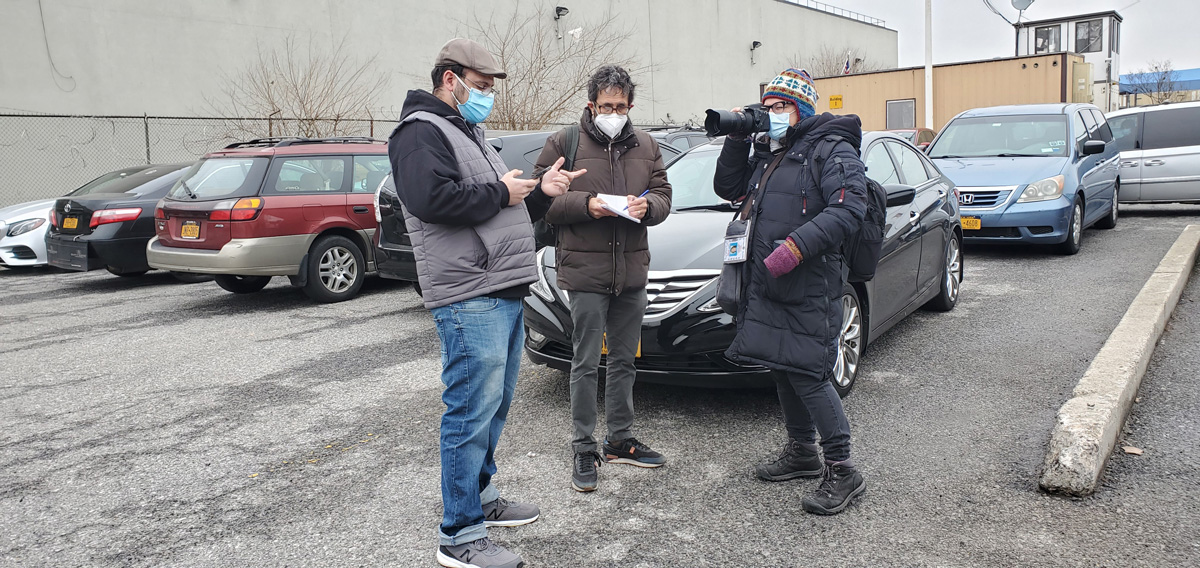Masbia in the NYT: Their Daily Miracle: Getting 8 Tons of Food to the Needy, Every Day
Posted on: May 21, 2021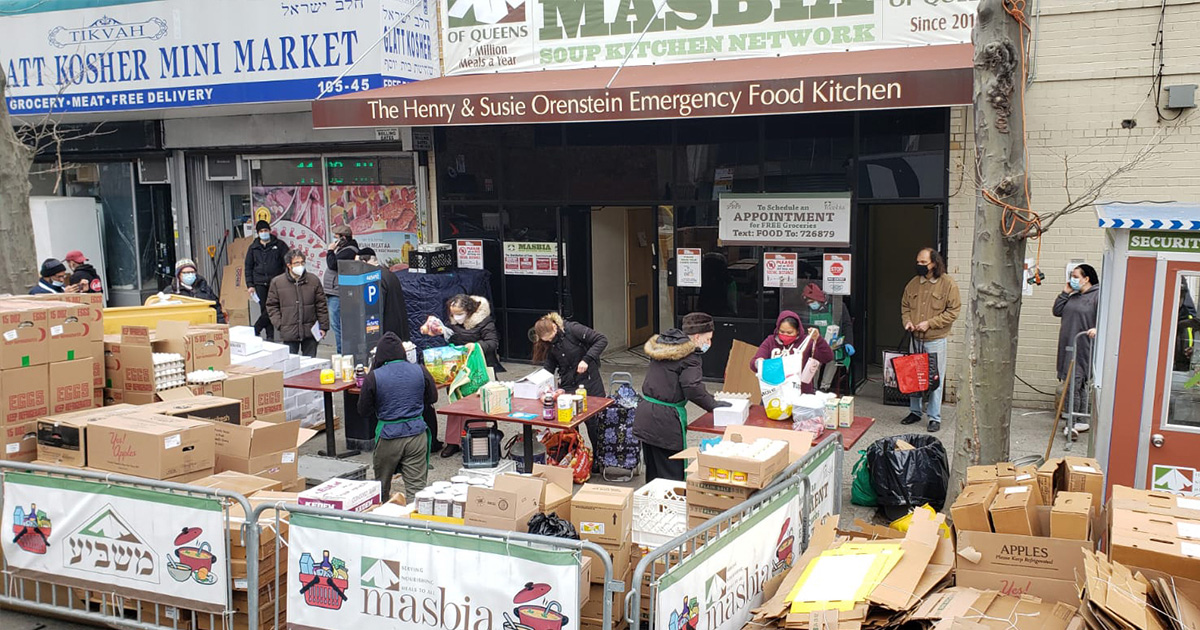
This story is written by Andy Newman, and photographed by Stephanie Keith, for New York Times, you can spot them wearing masks in the above photo. The Story is about those who make the miracle possible helping New Yorkers who still struggling for food after fifteen months since the pandemic started. Staff and volunteers in pantries across New York City tell their side of the story and difficulties to overcome to serve those in need. Our ED, Alexander Rapaport, stated: “The poor don’t deserve the rich people’s garbage,” while sharing Kosher food with the needy at Masbia’s three locations. But rescue also has its place in Masbia’s operation two of our generous donors are featured in this story Grow & Behold and Manischewitz.
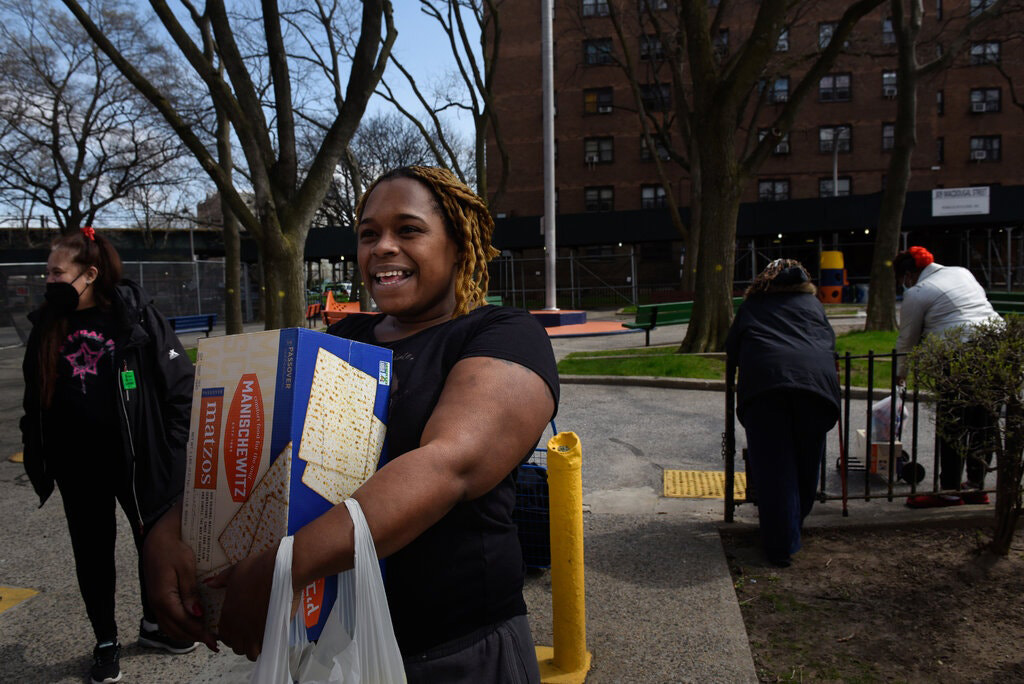
An army of “food rescuers” in New York tries to make the best of an inherently wasteful grocery system.
By the time Jon Stepanian pulled his beat-up Dodge van out of a Trader Joe’s parking lot on Long Island late one recent afternoon, it contained more than eight tons of scavenged food: romaine and romanesco, Bulgarian yogurt and Key lime mousse, flats of organic strawberries and cartons of frisée, dragonfruit and kumquats and olive-size baby kiwis, wedges of $28.99-a-pound Gabietou cheese and balls of local mozzarella and cases of vanilla Almond Breeze. Not just plain old whole-wheat bread but sourdough bread and olive bread and Balthazar baguettes, plus challah and pretzel rolls and blueberry scones, paleo “noodles” made from julienned rutabaga, Soothing Touch Tuscan Bouquet brown sugar scrub, and prebiotic cleaning foam with rose-stem cells, a 30-pound box of prunes — “like a box of bricks,” Mr. Stepanian said as he hefted it — and more than $1,000 worth of oranges.
Mr. Stepanian, a co-founder of a nonprofit called Community Solidarity that feeds 15,000 people a week, had spent the day hopscotching across the mallscape of central Long Island from one giant supermarket to the next. He was headed to a pop-up food pantry to give it all away.
“When we unload,” he said, “the crazy part is, within 45 minutes, all this food is gone.”
Fifteen months into the pandemic, hunger still grips the region. Government food programs remain in overdrive. Big, well-known distributors like City Harvest, which move salvaged food by the tractor-trailer load, have doubled their deliveries. But need persists: In late March, nearly one in 10 households with children in the New York Metro area — more than half a million families — said they “sometimes” or “often” did not have enough to eat, according to a census survey.
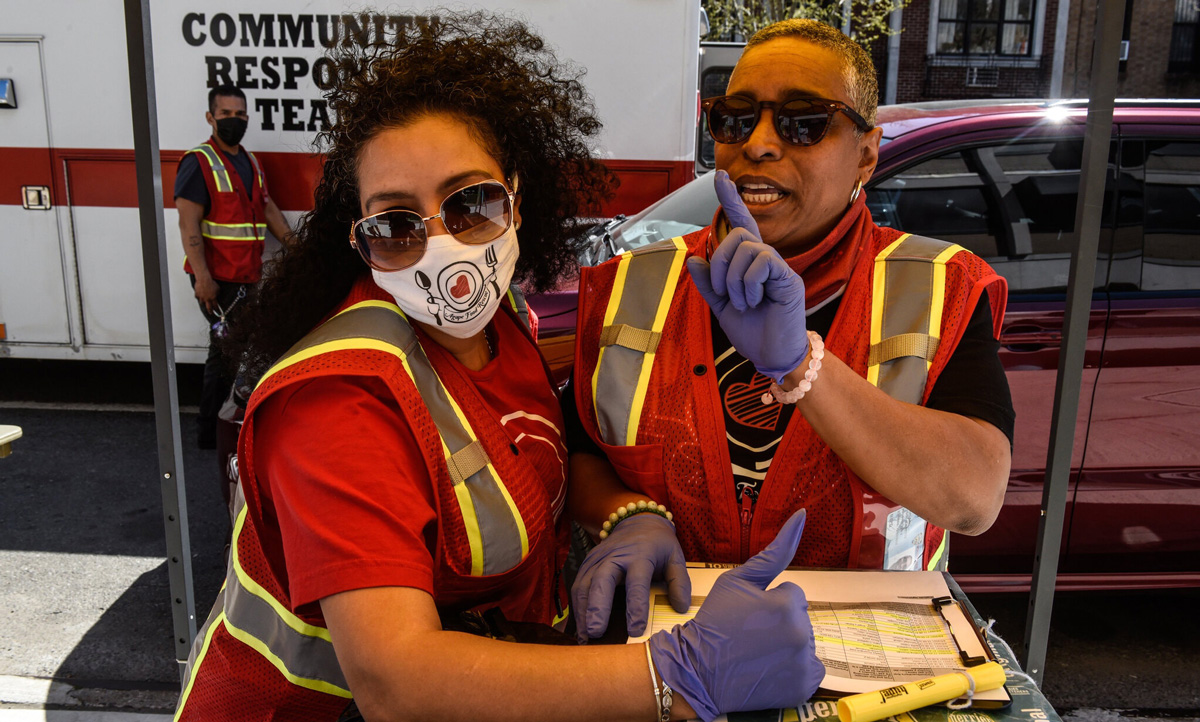
At the same time, grocers discard enormous quantities of food each week, much of which has never even made it onto the shelves. Enter the volunteer food rescuers.
Food rescue groups come in all shapes and sizes. But their members share a conviction that for a single can of beans to go to waste at a time of crisis is a moral crime.
“My friend will text me and she’ll say, ‘My boyfriend was riding his bike home from work, and he just rode past a dumpster full of zucchini,’” said Lucy Lesser, who volunteers with an anarchist network in Brooklyn called In Our Hearts. She was headed to the East New York headquarters of Agape Food Rescue, a shoestring operation run out of a decommissioned ambulance, to pick up a load of pastries from a bakery in Bushwick and produce from a distributor at Brooklyn Terminal Market.
“It becomes a lifestyle,” said Agape’s founder, Jeanette Lugo, a retired Marine with a salt-and-pepper brush cut. “At first it becomes something you volunteer for, then it’s something you do, then it becomes a feature of who you are. I stopped being Jeanette about three years ago and now I’m just Agape Food Rescue.”
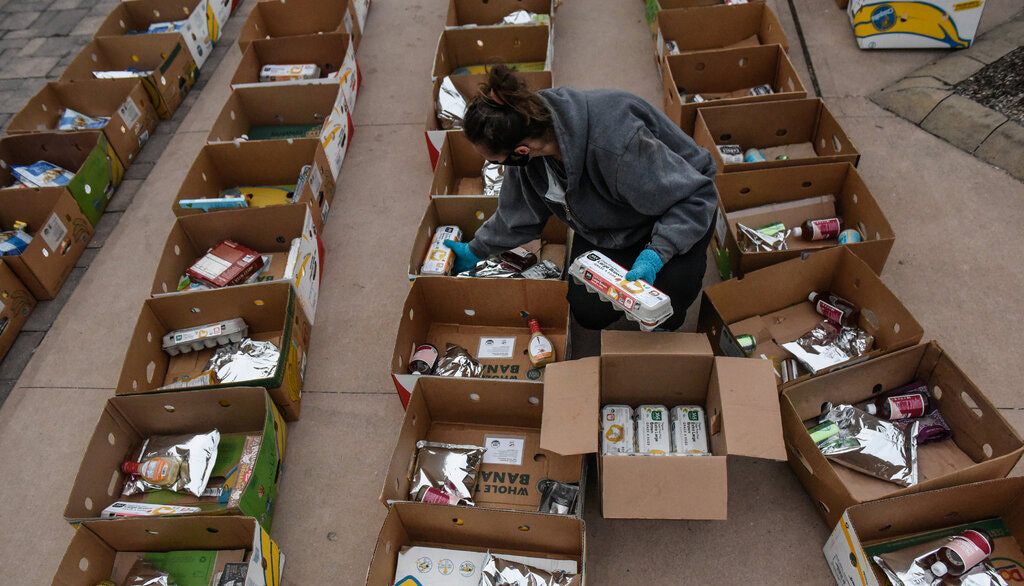
Some people in the world of hunger relief are skeptical about feeding people supermarket rejects rather than food bought by charity dollars or government programs. “The poor don’t deserve the rich people’s garbage,” said Alex Rapaport, executive director of the kosher Masbia Soup Kitchen Network.
But rescue also has its place in his operation, which runs round-the-clock pantries in Brooklyn and Queens. On St. Patrick’s Day, he sent a truck to the Hunts Point food hub in the Bronx to pick up 47 cases of hot dogs, salami, kielbasa and chicken parts from a high-end kosher meat purveyor, Grow & Behold. The kielbasa was being donated because the texture was slightly too soft. “I’m not going to sell it at a premium price to my customers, but I’m not going to let it go to waste,” said Naftali Hanau, Grow & Behold’s C.E.O.
Masbia’s driver took it to the group’s pantry in Forest Hills, Queens, where it was set out on tables alongside staples like eggs, cooking oil, apples and sugar and a seemingly limitless supply of Manischewitz cold-brew-coffee-flavored macaroons. “They didn’t like the flavor so they gave us nine or 10 pallets of it,” Mr. Rapaport said.
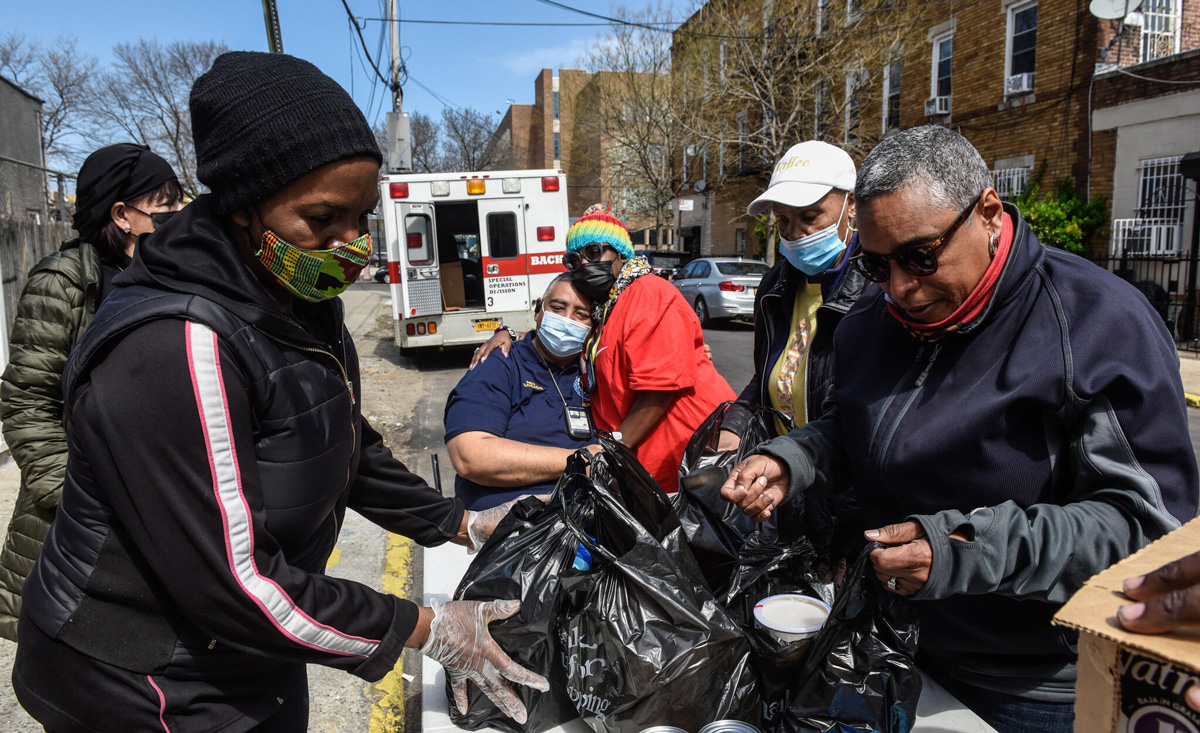
Often, Mr. Rapaport said, rescue is more trouble than it is worth. “A lot of food rescue puts more gasoline on the street than the value of the food,” he said. But Ms. Lugo, who specializes in pop-up pantries outside public-housing complexes that sometimes serve only a dozen people, said that efficiency was not the point.
“It can be three boxes of something,” she said, “but what we keep in our mind is there’s three people that got food that day. The point is there could have been someone who woke up that morning and they had nothing and they wished they had something.”
The landscape of surplus food is impossibly vast; waste is built into the whole business model of the food industry. People hear “food rescue” and picture loaves of day-old bread and bags of bruised apples, but that’s just a very small part of it, Mr. Stepanian of Community Solidarity says.
Stores throw out fruit because it’s actually ripe — shoppers seem to prefer their avocados rock-hard. Grocers throw out case after case of “mispicks” — cartons that say one thing but contain another. Mr. Stepanian’s haul that Thursday in early March included pineapple juice mislabeled as pickles, barbecue sauce labeled as jerky and potato chips in a box that said macaroni and cheese.
If a big store gauges demand slightly wrong and takes delivery on a couple more pallets of bananas than it has room for, they will go directly to the dumpster. Sometimes, Mr. Stepanian said, a store will get a new product before its official release date and have no room to hold it. This is how Community Solidarity’s food-pantry clients received pints of the nondairy version of Ben & Jerry’s Americone Dream ice cream weeks before it appeared in your bodega’s freezer.
Sometimes an entire truck will be a mispick — a delivery to the wrong store. When that happens, Mr. Stepanian says, “They’ll say, ‘You have two hours to get down here and clear out this tractor-trailer.’”
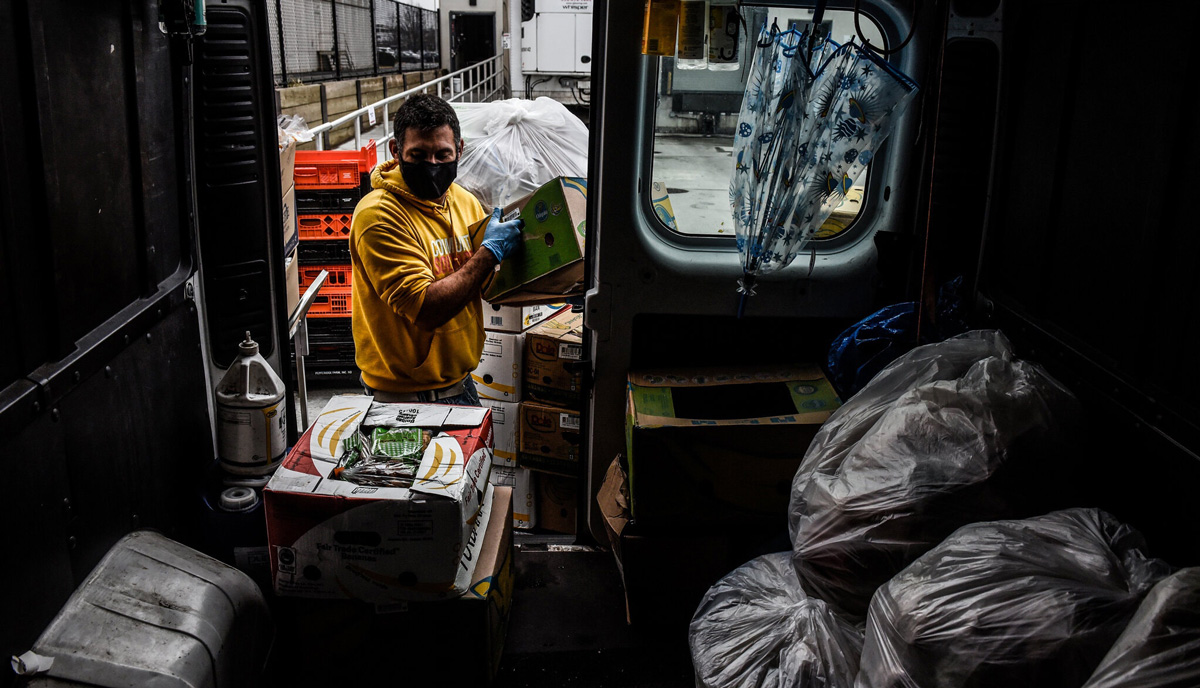
(Such profligacy is hardly unique to the grocery industry. “This level of waste that’s here, this is with everything,” Mr. Stepanian said. “This is with clothing, this is with school supplies, with toys.” A seasoned dumpster diver, he described fishing new laptops and projectors out of the garbage at Staples. He said that a national housewares chain has a policy of detonating paint bombs inside its trash containers to make excess merchandise worthless.)
Community Solidarity has built its network of donor stores painstakingly, one connection at a time, befriending employees, learning to ride the waves of food that flow in and out the back door. The group has achieved a level of access that would not seem possible in the locked-down world of corporate supermarket behemoths. Most chains, Mr. Stepanian said, decline to donate food because they can simply write off what they toss. “It’s more efficient for them and more cost-effective to throw it out than to donate it, unless I’m here,” he said.
At a Whole Foods in Jericho, Mr. Stepanian, a scruffy 36-year-old with piercing blue eyes, wheeled a hand truck through the labyrinthine corridors of the store’s backstage like a junkman of old, stopping at Produce and Dairy and Prepared Foods and calling out greetings to familiar faces. He has supplied the stores with sturdy plastic bins that say “Donation” on them, and he often takes out their garbage.
“As long as you’re not in people’s way, they’ll start giving you more and more and more until eventually, you get this much,” he said, gesturing at his stacks of boxes.
Mr. Stepanian, who typically works from 7 a.m. to midnight, has taken only two days off since the pandemic started. He receives a modest salary as the C.E.O. of Community Solidarity but when asked how he supports himself, he answered: “This is Long Island. I live with my parents.”
While he made his rounds, from Westbury to Commack to Plainview, a half-dozen other Community Solidarity volunteers were calling at stores in Merrick and Sayville and Lake Grove. They converged at dusk on a traffic triangle across from a strip of Mexican restaurants and storefront churches in Farmingville, a hamlet in the middle of the island with a big immigrant population. Volunteers put on headlamps and filled boxes with fresh fruits and vegetables, cartons of eggs, vegan brownies and Bundt cakes and three or four kinds of bread. “Jesus got nothing on us,” one volunteer cracked.
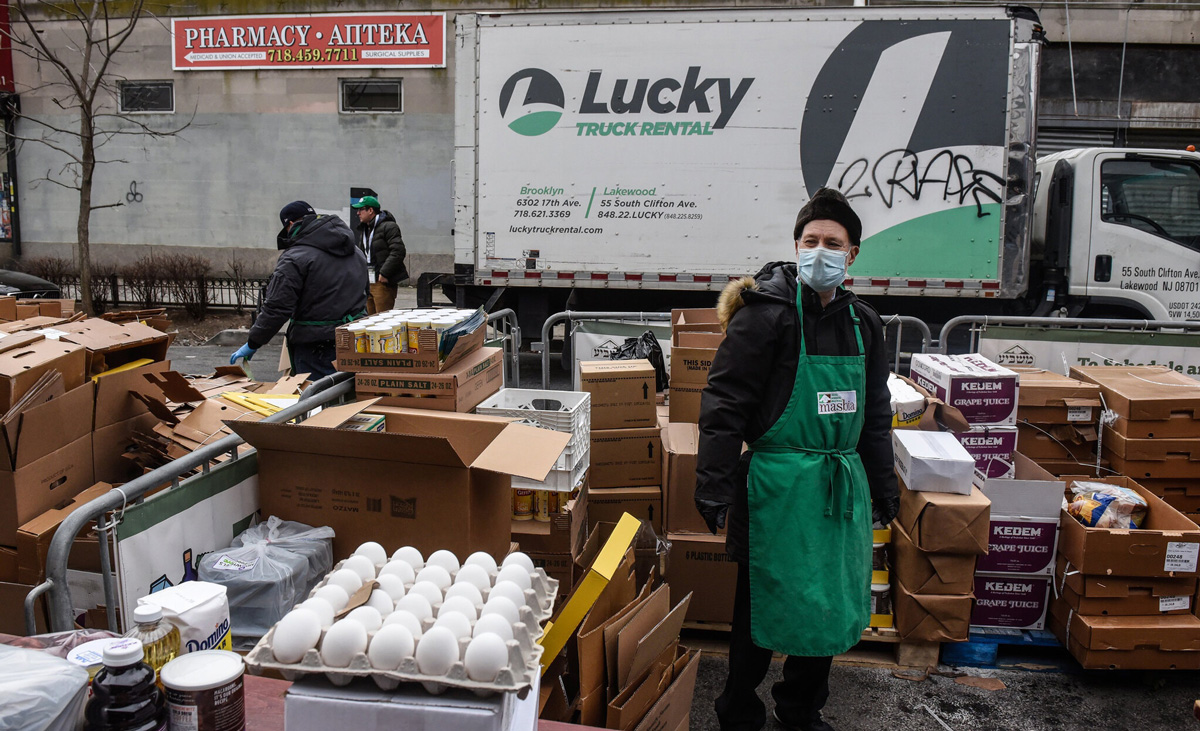
The line of cars waiting for food snaked down Horseblock Road and around a corner. Just after 8, the food share opened for business and volunteers raced from car to car like a pit crew at Indianapolis. “All right! Two in here!” “Four here! All the way down!” “I need two gluten-free!” “Back seat or trunk?” When the dust cleared, 261 people had each received at least a week’s worth of groceries.
At a Foodtown in Jackson Heights, Queens, on a Wednesday morning in early April, pickings were slim for the Agape Food Rescue crew. The manager wheeled out a stack of Streit’s Passover matzo, some jerk-flavored Old El Paso World Taco Kits and a couple of cases of pasta. That was about it.
Half an hour later the Agape ambulance pulled up in front of the Ocean Hill public housing complex in Brownsville, Brooklyn. Up went the yellow awning and the folding table. Eugenia Maisonet, 72, a retired clothing-store worker, said she would have no problem consuming a five-pound case of matzo. “I would have it with cheese, coffee, butter,” she said. “I could crush it and put it when you’re doing the meatloaf, like bread crumbs.”
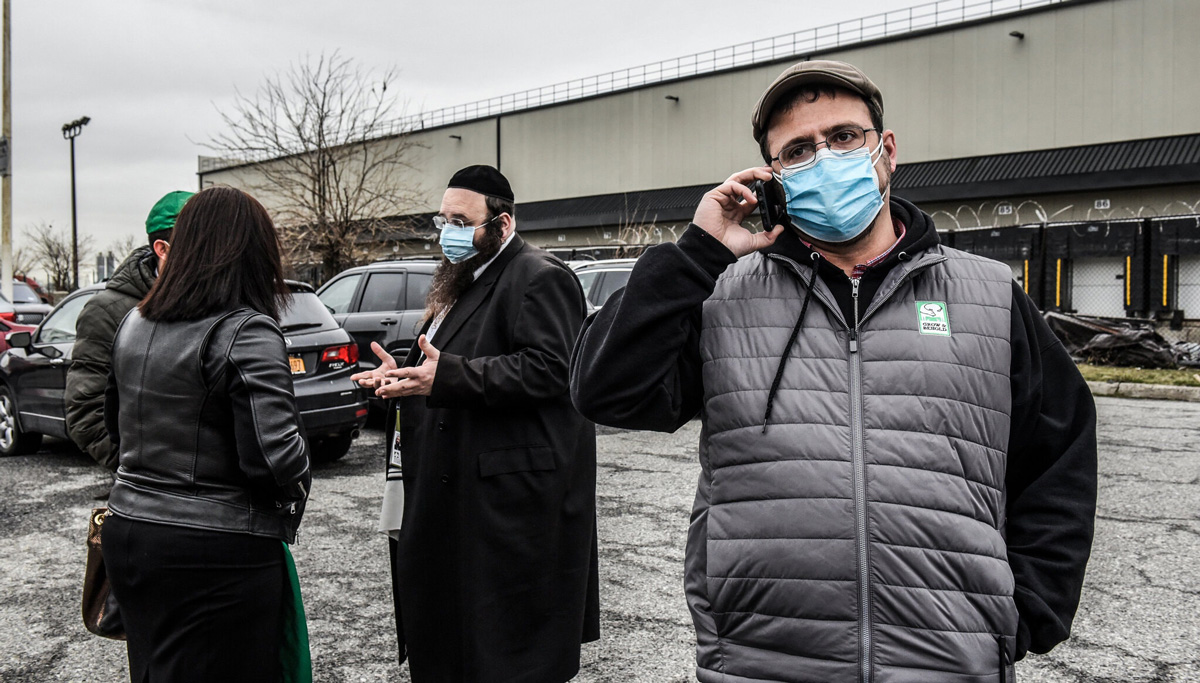
Priscella Edwards, 35, took several packages of black squid-ink spaghetti. “I’ve got four kids, make it work,” she said. “I’ll just tell them it’s the healthy kind of noodles.”
Ms. Lugo’s phone rang. Her ringtones are sorted by category. A snippet of “My Favorite Things” means a call from a supermarket. “God Is Love” means a fellow chaplain. The hiccupping five-note hook from “Mi Gente” means a food pantry. This one was “Mi Gente.” She picked up. “Hi, Rev!”
It was Hector Lozada, who runs a Wednesday pantry at a Pentecostal church in East New York. He had several dozen bags of groceries left. Ms. Lugo said she’d be right over. She had been wondering what she could offer the next day at her regular pop-up outside a school in Bedford-Stuyvesant.
“That’s the spiritual part of what we do,” she said. “It’s just having faith in the universe that it will come to you.”
Like Mr. Stepanian, Ms. Lugo, 54, attributes her success in flushing food out of the cracks in the system to her ability to build partnerships, in her case, with anyone, regardless of politics: anarchists, capitalists, Pentecostals, cops. Ms. Lugo is herself a sort of one-person diversity-and-inclusion campaign, an Afro-Latina lesbian ordained chaplain with close ties to the Community Affairs Bureau of the N.Y.P.D.
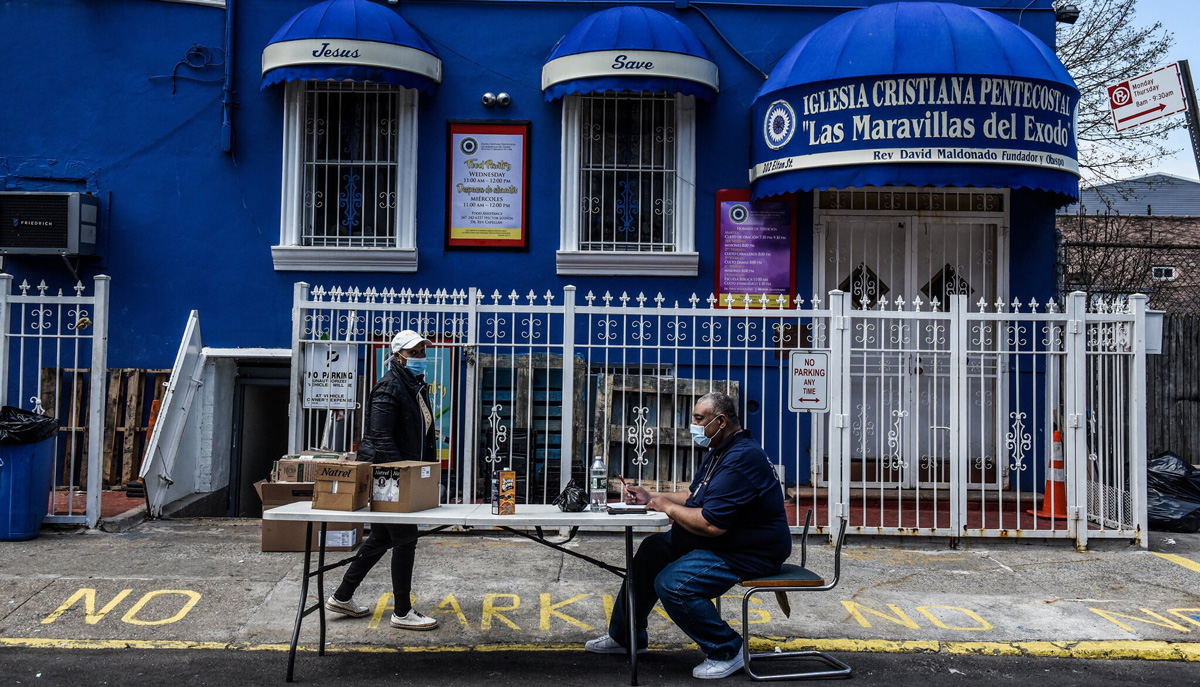
“Rev is very conservative,” she said outside Mr. Lozada’s church. “He definitely knows I’m openly gay. He’s met my partner, and it’s not a problem. At the end of the day, he knows the work that I do, so he doesn’t mind.”
“Who you serve doesn’t make a difference,” Mr. Lozada agreed. “At the end of the day, we’re still children of God.”
The next morning was a dash to fill the truck. The first stop was a church in Ridgewood, Queens, where the Rev. Mike Lopez, a bearded, heavily tattooed, cigar-smoking priest who presides over the vast Hungry Monk pantry network, folded back a screen, Monty Hall-like, to reveal a table groaning with groceries. The Agape crew took 25 bags. Then it was off to a bread warehouse on an industrial stretch of Flushing Avenue, and a Frito-Lay distributor down the street.
“With food insecurity, people think it’s just rice and beans,” Ms. Lugo said. “But it’s not just meals. You got kids standing in your house all week. They need snacks. I call it fun stuff, but it gives dignity to families.”
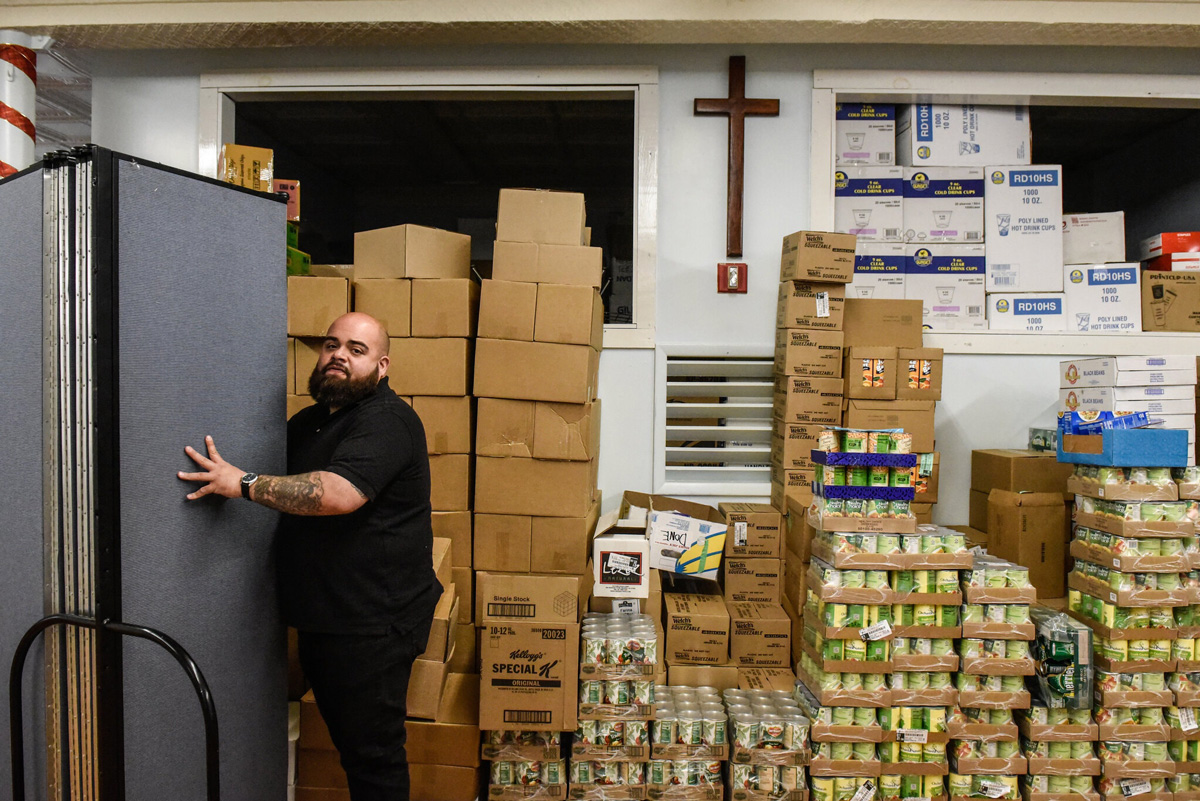
Outside P.S. 23 that afternoon, mothers and children lined up at the Agape tent and loaded up: bags of groceries from the two clerics, loaves of bread, dried strawberry-banana chips from Frito-Lay, cans of Perrier from another rescue.
A young woman with a kindergartner in tow approached. “Excuse me, is this the pantry?” she asked. She had just moved to a domestic-violence shelter near the school, she said. Someone handed her an extra-large reusable shopping bag, and she filled it up.
She hoisted the heavy bag up to her shoulder, took her son’s hand and headed back to the shelter.
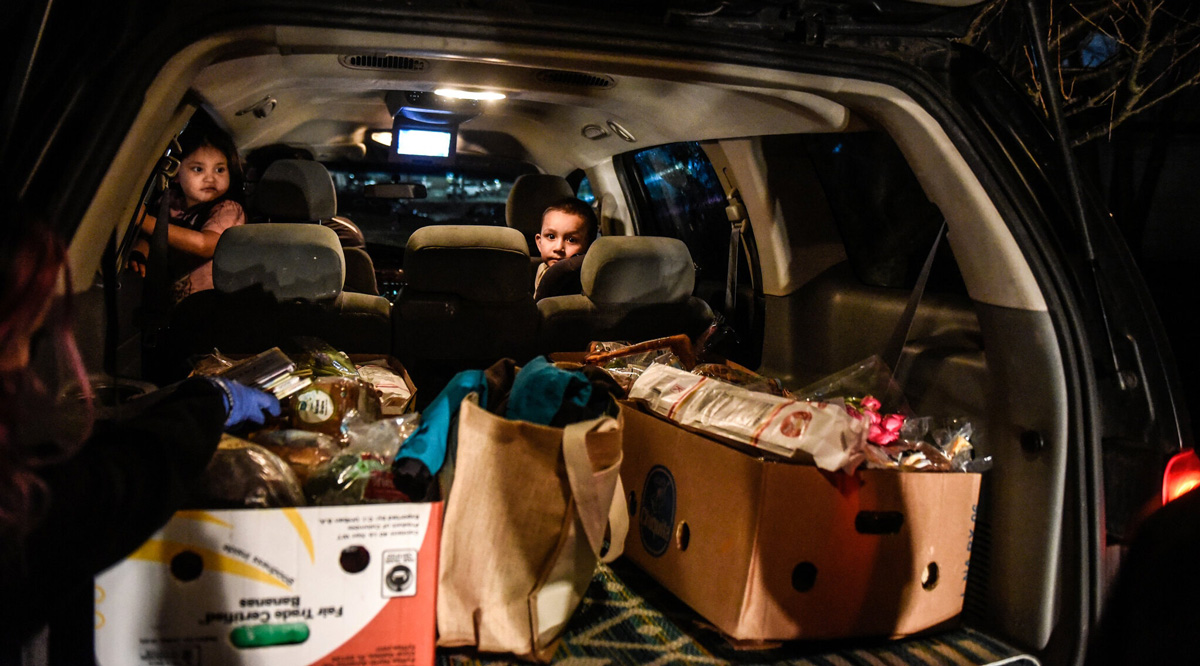
See below photos during NYT reports at Masbia of Queens:
Read the original article HERE.





